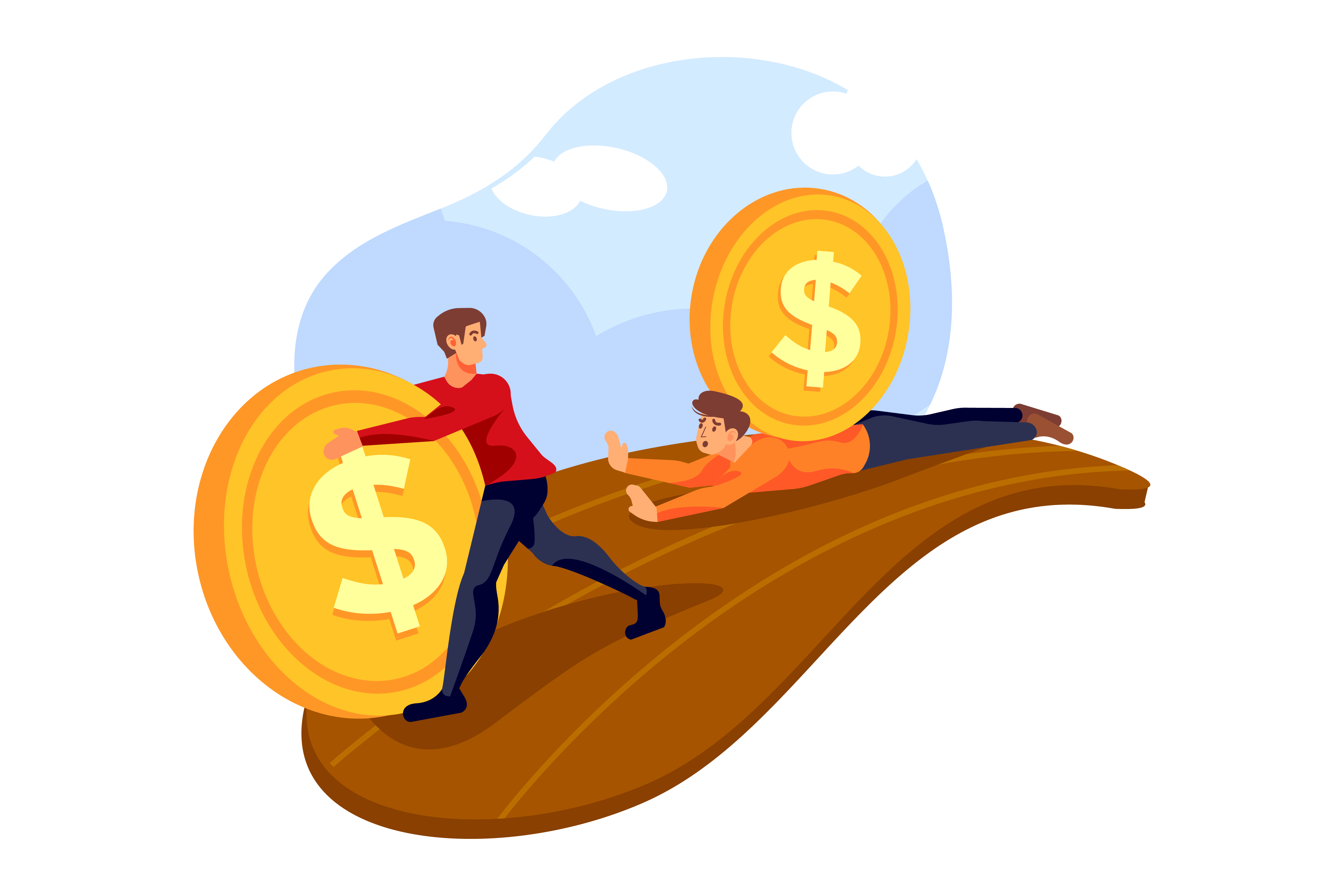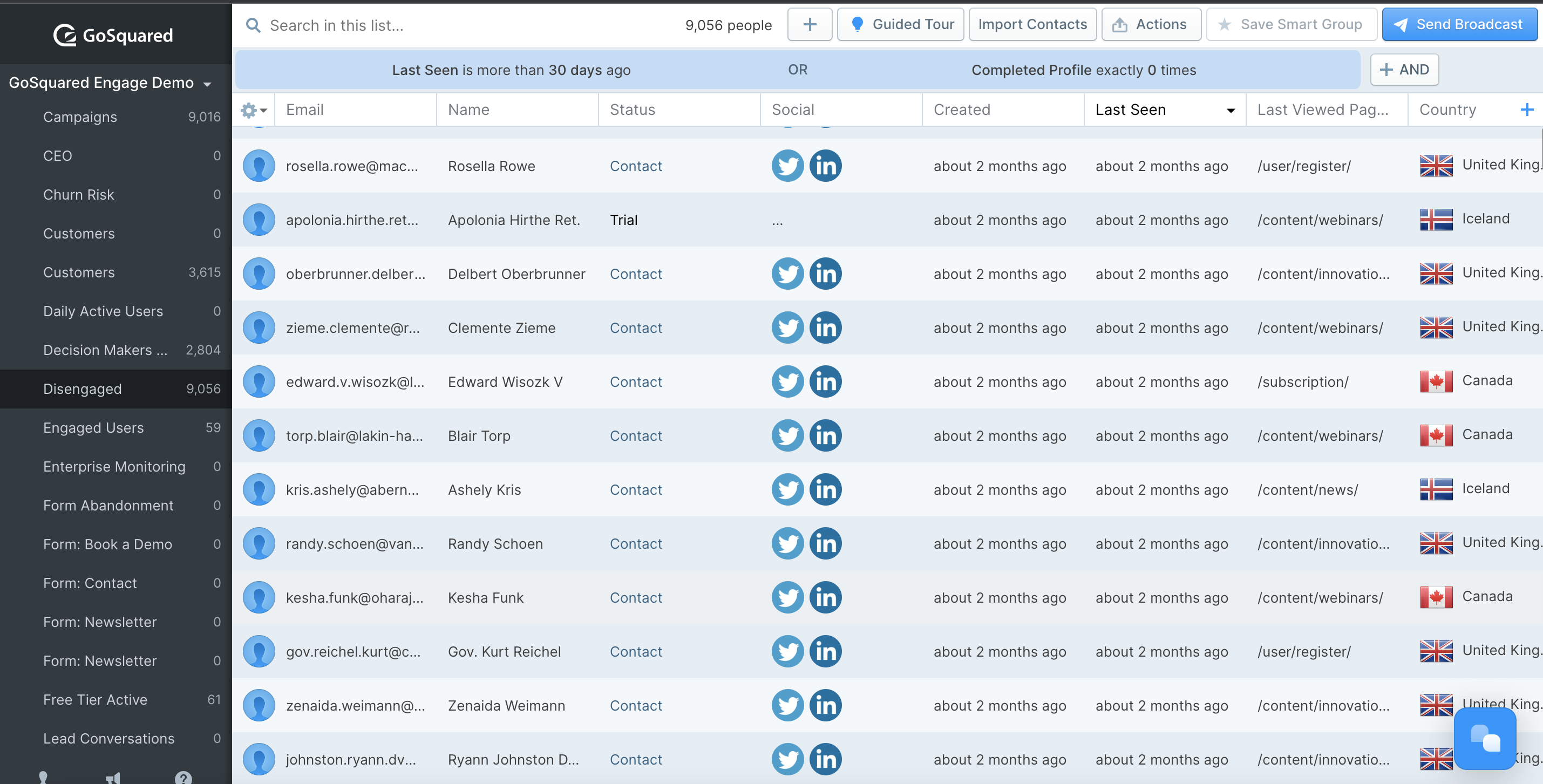Churn means users are on their way out rather than on their way in.
The economic repercussions of churn for U.S businesses alone is $136 billion a year according to CallMiner.
Worst of all? The type of churn the report referred to was known as avoidable churn, meaning if the company had reacted to the warnings of customer churn – that churn and therefore revenue loss could have been avoided.
In reality, unless you understand churn including what it is and how to prevent it as much as possible, your business is more likely to experience it.
If you need a little help with all things customer churn, you’re in the right place. Here is what you need to know and crucially, all the best tips and tricks to keep users engaged so that they’ll stay subscribed to your product.
What Is Churn?

Churn is the opposite of retention.
If a customer churns it means they have stopped using your product. Lost customers = lost revenue.
While no business is immune from churn, it’s safe to say that if your churn rate becomes too high it’s definitely a cause for concern.
What Is Churn Rate?
The churn rate measures the percentage of your customers who have stopped subscribing to your product. For any SaaS business, knowing your churn rate is pretty critical as it directly correlates with your MRR.
Why Is Churn Rate Important?
Churn rate matters because it is a direct reflection of the experience, as well as the perceived value of your product for your users.
A sudden spike in customer churn can indicate a major problem. Likewise, even a slow drip where users who are leaving aren’t being replaced with new customers isn’t great. Therefore, the churn rate can be a helpful indicator of how your business is performing overall.
How To Calculate Churn Rate
The churn rate can be determined by taking all of your monthly recurring revenue (MMR) at the start of the month and dividing it by all the revenue lost through users ceasing their subscriptions. Remember not to count any upgrades or additional revenue as part of your original figure.
Based on the difference between the revenue gained and lost, you’ll then be able to work this out as a percentage which will be your churn rate.
Why Do Customers Churn?
Well, let’s hand this over to you – think of any products you’ve unsubscribed from recently. Why was that?
It’s safe to say if a user goes as far as to cancel their subscription with you, there is at least one aspect of your product or service they find to be unsatisfactory.
Although not exhaustive, here are some of the top reasons that lead to churn for SaaS businesses.
Product Is Not Meeting Requirements Or Expectations
Imagine needing a pair of shoes to meet clients and investors. Only that pair of shoes you ordered turned out to be the type of shoes you find at a bowling alley, rather than anything that will make you look smart. Sure, it’s technically a pair of shoes, but it’s clear what you got is not what you expected, nor does it meet your needs.
A SaaS product can feel much the same if it’s just not up to the job. Perhaps it lacks key features, is complicated to use, or is simply unreliable. Either way, your customers want to love the product but end up feeling frustrated. Their profits may even be threatened due to the mismatch and so they either downgrade or cancel their subscription altogether.
What can you do about it?: Try measuring your Net Promoter Score (NPS). This allows you to survey your customers and gather their thoughts about using your product. It may well highlight issues you didn’t even realise were causing friction or dissatisfaction. From there, you can create a plan on how to address these issues, especially if doing so will provide a lot of commercial value for your business.
Price
Something we hear a lot is how HubSpot is super expensive. Often, it’s not a question of what something costs, but rather whether the value is perceived in what is paid for that service.
For instance, yes a Rolls Royce is going to be expensive. But, knowing the craftsmanship that goes into making each vehicle combined with the positioning of the brand means people who can afford it are willing to pay the price. However, if that same price was applied to a beat up Ford Mk3 Escort, it would be difficult for people to associate the price with the value.
There are no set rules on what you should be charging for your product. Though, a lack of competitor research could mean your product just isn’t commercially viable. If so, customers will start to drop off the radar in the form of churn.
What can you do about it?: Understand the value of your product, and have a tangible way of demonstrating this to your users. If you are overcharging for your products, particularly if the value of your features isn’t being highlighted adequately, then you need to find a new approach. Also, you can offer free trials and other price incentives where appropriate. This includes the option to pay for a yearly subscription at a discount compared with paying monthly.
Competition
Can you say with complete certainty who your competitors are?
If you can, do you understand what differentiates your product from theirs, and is this being effectively communicated with your customers?
In some cases, the market is so crowded it’s difficult to be heard above the noise. In others, small start-ups are trying to compete with the giants in their niche. Whatever situation applies to your business, you need to know who you are up against in terms of your product offering and marketing.
That’s because your users are smart. They too will be researching alternatives, and if they like the look of what someone else is doing, and they can’t find the same with you, churn is far more likely.
What can you do about it?: Keep your eye on the ball. Never assume that your customers can’t find what you have to offer elsewhere, or even that you are the market leader. If you remain in tune with your customers, you can stay ahead of the game. This method also ensures your product won’t date because you are moving with changing trends, technologies and user preferences.
Poor Customer Service
Whether you’re going through a drive-thru or indeed paying for a SaaS product that is critical to your business, poor customer service should never happen. If it does, who can blame customers for churning?
Remember, a bad review can spread like wildlife. With the likes of Google reviews and Trustpilot, users can also publicly vent their frustrations about your business and this will inevitably sway the purchase decisions of other users.
While it’s impossible to make every user happy all of the time when it becomes the case that users are becoming annoyed by the same issues, or even the same responses, this is when the most damage happens to your reputation. Your churn rate will certainly be a reflection of this if so.
What can you do about it?: Always remember that without your customers, you don’t have a business. By all means, know what is impossible to achieve and be realistic, but at the same time recognise that like you, your customers expect to feel valued and listened to. Checking in with them with some good old customer engagement won’t hurt either.
You’re Too Shy
Any excuse to mention Kajagoogoo on this blog.
In all seriousness, if you aren’t telling your users about everything your product has to offer, how will they know about it?
Sometimes, customers churn because they don’t realise everything they can get from you. So now is the time to pull out tangible demonstrations to entice users and make them fully aware of the value they are getting with you.
Likewise, as we said above you must engage with your customers. If you aren’t checking in with them, you’ll become too easy to forget. Segmentation can make all the difference in concentrating your messaging so you target the right users with the right message.
What can you do about it?: Join an 80s synth band. Outline a full list of your product features. Decide the best ways to communicate these with your users, including through email marketing, social media marketing, blog posts, PPC and video marketing. Give tutorials and demonstrations so that it couldn’t be clearer what your product does and how to get the most out of it.
Involuntary Churn
It’s not always an issue with your product or customer service which causes customers to churn. That’s because involuntary churn happens when a user payment method has failed.
It is estimated that 12% of credit cards fail for businesses with a monthly recurring revenue (MMR). Often, this can be attributed to expired credit cards, though insufficient funds can also sometimes be to blame.
As with any other kind of churn, involuntary churn is a cost your business cannot afford.
What can you do about it?: You have your customer payment details in a file. So you should be able to spot when a card is about to expire. Ideally, giving plenty of notice when reminding users to update their payment information is the best course of action. After all, your users are busy people and a payment failure isn’t always deliberate. If sending a couple of emails doesn’t prompt action, you may need to give them a friendly call.
Customer Churn FAQs
Here are some of the most common questions about churn that we’ve answered. However, if you have further questions, or would like to speak to our team about your specific churn issues, please see our support page, where you’ll also find details on how to contact us.
What Is Customer Churn?
Customer churn refers to when customers stop using a product or service. There are a number of reasons why their subscription is no longer active, but either way, it relates to lost custom for your business. While some level of churn is inevitable, customer churn should be monitored so it can be kept to a minimum.
What Is A Good Churn Rate?
A churn rate of 0% would be the dream. In reality, what makes a ‘good’ churn rate is going to be different for each business. In general, the lowest number possible is what to aim for. If the churn rate creeps up, then this is not good. But if your churn rate is reducing, then this is great.
Preventing Customer Churn With GoSquared Engage

The clue is in the name with ‘Engage’, seen as engaged customers are less likely to churn when you are using a tool that will alert you of any churn risk. Plus give you actionable steps on how to prevent that churn risk from becoming a reality.
In our above screenshot, we’ve highlighted how our demo version looks. When this is filled with real customer data – your customer data – you can easily toggle between each of the different features. Crucially, you can identify disengaged customers, along with those who are at risk of churn.
If you’re new to GoSquared, we’d love to show you around! You can book a free demo with one of our team, where we would be more than happy to show you how Engage works. Crucially, how Engage can help you achieve your aims as a business by reducing churn.
Ready to get started? We offer three Engage packages depending on where you are at with your business. You can scale up or down at any time, and we won’t tie you into any lengthy contracts putting you back in the driving seat of your marketing.
For anything else, feel free to contact us at any time and one of our team will get back to you.


